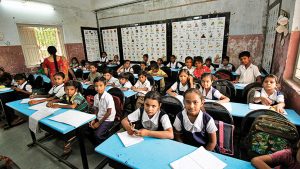
21-01-2019 (Important News Clippings)
To Download Click Here.
 Date:21-01-19
Date:21-01-19
Playing With Fire
Take back Citizenship (Amendment) Bill, north-east could burn over it
TOI Editorials

Perhaps fearing that it is losing popularity, the NDA government is blundering into one reckless populist gamble after another. A case in point is the passage through Lok Sabha of the Citizenship (Amendment) Bill, which may be intended to make Bengali Hindus look favourably on BJP. The bill, which seeks to grant citizenship to Hindus and other minorities from Bangladesh, Afghanistan and Pakistan (but excludes Muslims), has triggered vigorous protests in Assam and other northeastern states.
AGP has broken off its alliance with BJP in Assam, and Assamese intellectuals and civil society are in ferment. In fact, several BJP legislators in the north-east too have opposed the bill on the grounds that it would legitimise the presence of Bengali-speaking refugees in their states. Several constituent parties of BJP’s North-East Democratic Alliance have urged Union home minister Rajnath Singh not to go ahead with the bill. If BJP wants to establish a firm beachhead for itself in India’s border regions in the north-east, then this bill is evidently misfiring.
There’s no denying that the north-east’s ethno-religious make up is extremely complex. It’s also true that the region has faced the brunt of waves of migration from erstwhile East Pakistan and then Bangladesh. The anti-foreigner agitation in Assam eventually led to the inking of the Assam Accord which laid down March 24, 1971 as the cut-off date for absorbing migrants. But the amendment bill contradicts this by making December 31, 2014 the cut-off. It also flagrantly violates the constitutional tenet of secularism by making religion a criterion for citizenship. BJP shouldn’t have stirred the hornet’s nest here. The region can easily slip back into separatist turmoil which it is just leaving behind. The Citizenship (Amendment) Bill must be put on hold.
A Bombay Plan For India
It’s time someone comes up with an election manifesto promising 100% literacy for India by 2022
Sanjaya Baru, [ The writer is distinguished fellow, United Service Institution of India]

This is election manifestowriting time. The Indian voter wants many things and most political parties offer a wide assortment of promises in their election manifestos. If there is one achievable promise that can — and should — be made by all, it is to make the entire country 100% literate by 2022, the year Independent India turns 75.
Literacy, as officially defined — ‘a person aged seven and above who can both read and write with understanding in any language’ — is admittedly an inadequate measure of human capability in a modern economy. Based on this minimal definition, India’s literacy rate according to the 2011 Census was 72%, well below the global average of 86%.
Literate Now, Educated Later
By now, this number may well have gone up. Taking it to 100% is a doable objective. Launching a nationwide initiative, involving high-school and college students, voluntary organisations and local communities in ensuring total literacy can also help mobilise society around a positive agenda. Going beyond literacy, India requires at this stage of development massive investment in education — general and technical. Several studies have in recent months established beyond doubt the strong and positive relationship between investment in education and skills — what economists call ‘human capital formation’ —and the overall level of economic development. That link is through labour productivity.
Indeed, what sharply distinguishes China’s growth experience after 1980 from India’s has been the former’s investment in education, at all levels — from primary to higher education — and its contribution to human capital formation and labour productivity. The literature on China’s impressive growth performance has increasingly come to recognise the foundational role played by her investment in human capability at the base of the social pyramid. India has done as well at the apex, with specialised institutions and private investment, however, the wider foundation is weak. The more recent trend of private investment-funded education is not going to bridge the gap. What is urgently needed is publicly funded education and research.
The differential economic performance of various Indian states can also be partly explained by differing levels of human capital formation. The Hindi-speaking states have remained laggards on the literacy and educational fronts. It is here that a concerted campaign for educational empowerment is urgently needed if the country’s overall rate of growth has to be sustained in a regionally balanced manner. Needless to add, as educational attainment improves, employment opportunities must expand. Otherwise, one faces the situation that many of the eastern and northeastern states face, namely, an educated youth in search of gainful employment.
None of the above is new thinking.It is just that the national political leadership across political parties has to be reminded as to what its priorities ought to be.In our recently published book, The Bombay Plan: Blueprint for Economic Resurgence, my co-editor Meghnad Desai and I, and some of our fellow contributors like Ajay Chhibber, draw attention to the fact that investment in human capital formation was one of the missing elements of Indian planning in the first quarter-century after Independence.
Old School of Thought
Neither Jawaharlal Nehru nor P C Mahalanobis paid much attention to it, while the authors of the so-called ‘Bombay Plan’ did. Published in 1944 as ‘A Plan of Economic Development for India’, and jointly authored by J R D Tata, G D Birla, Lala Shriram, Purshottamdas Thakurdas, Kasturbhai Lalbhai, Ardeshir Dalal, A D Shroff and John Mathai, this historic document made all the arguments in favour of public investment in education and human capability building that have more recently been heard from economists like Amartya Sen.
Observing that “extreme forms of poverty will prevail… as long as the overwhelming majority of the Indian people are able neither to read or write”, the so-called ‘Bombay Plan’ proposed public investment in literacy, including adult literacy, and school and college education, including ‘scientific education and research’.
Contrary to the more recent political slogan of public provisioning of ‘roti, kapda aur makaan’ (food, clothing and shelter), the Bombay Plan demanded public nvestment in health and education too — a good half-century before Amartya Sen and Jean Drèze published their study on the importance of investment in human capability, An Uncertain Glory: India and its Contradictions (1993).
It is a shame that three quarters of a century after Independence, we have not yet adequately provided publicly funded access to healthcare and education to all. The modestly begun effort in Delhi, where the Aam Aadmi Party (AAP) government has sought to fund and improve the functioning of government schools and public health facilities, should inspire similar efforts across the country. This should be a manifesto commitment of all national parties.
![]() Date:21-01-19
Date:21-01-19
ऐंजल टैक्स की समीक्षा
संपादकीय
आयकर अधिनियम की धारा 56(2) (7बी) के तहत ऐंजल टैक्स से छूट संबंधी मानदंडों को सुगम बनाने वाली अधिसूचना जारी होने से कई स्टार्टअप एवं निवेशकों को कुछ राहत मिलेगी। अप्रैल 2016 से प्रभावी होने वाला यह नियम कई आपत्तियों को भी संज्ञान में रखता है। केंद्रीय प्रत्यक्ष कर बोर्ड (सीबीडीटी) को 45 दिन के भीतर प्रत्येक आवेदन का आकलन करने के लिए कहा गया है। इस कदम का स्वागत किया जा सकता है लेकिन कुछ मुद्दों का समाधान जरूरी है।
स्टार्टअप में निवेश से जुड़ी वास्तविकताओं को लेकर पुख्ता कानूनी प्रावधान नहीं हैं। कुछ नियमों में ढील दी गई है लेकिन छूट के लिए आवेदन करने की विधि अब भी जटिल है और छूट देने या कर की मांग करने से जुड़े मामलों में अधिकारियों की मर्जी चलती है। छूट सीमा भी कम है क्योंकि यह 10 करोड़ रुपये कमाई करने वाली स्टार्टअप इकाइयों के लिए लागू होता है। निवेशक की परिभाषा में ढील की गुंजाइश नहीं है और नया स्पष्टीकरण भी हाल में आई विशेषज्ञ समिति की संकल्पना पर चुप्पी साधे हुए है। यह समिति छूट के लिए पात्रता शर्तों का अध्ययन कर सकती है।
ऐंजल टैक्स के साथ एक समस्या यह है कि यह नए कारोबार के ‘उचित मूल्य’ के इर्द-गिर्द घूमता है। अगर कर अधिकारी को लगेगा कि नए कारोबार की हिस्सेदारी ‘उचित मूल्य’ से अधिक पर हस्तांतरित हुई है तो वह कर की मांग कर सकता है। किसी नए असूचीबद्ध कारोबार के लिए उचित मूल्य तय करना असंभव है। किसी नए कारोबार का कोई पुराना लेखा-जोखा नहीं होता है और परिसंपत्तियों को लेकर भी पुख्ता तौर पर कुछ कहा नहीं जा सकता है, खासकर जब यह सेवा क्षेत्र से ताल्लुक रखता है। निवेशक आम तौर पर भविष्य में वृद्धि की संभावनाओं का आकलन कर नए उद्यम पर दांव लगाएंगे। इसका अनुमान लगाना नामुमकिन है कि कोई तय मूल्यांकन दमदार है भी या नहीं। छूट लेने की नई प्रक्रिया के तहत स्टार्टअप इकाई औद्योगिक नीति एवं संवद्र्धन विभाग के जरिये सीबीडीटी को आवेदन देती है। विभाग के पास छूट की सिफारिशें करने का विशेष अधिकार है।
आवेदन की प्रक्रिया में तेजी जरूर लाई गई है लेकिन कुछ और आवश्यक उपाय करने की जरूरत है। निवेशकों को मान्यताप्राप्त होना चाहिए और उन्हें छूट चाहने वाली स्टार्टअप इकाई को रकम के स्रोत के बारे में अनिवार्य तौर पर बताना चाहिए। ज्यादातर निवेशक ऐसी सूचनाएं देने से कतराएंगे। लिहाजा यह बाधा सरीखे होगी और इससे छूट के लिए कम आवेदन आ पाएंगे। नई अधिसूचना में उसे निवेशक के तौर पर परिभाषित किया गया है जिनकी न्यूनतम शुद्ध हैसियत 2 करोड़ रुपये है और कम से कम एक बार 50 लाख रुपये का आय कर रिटर्न दाखिल किया है।
उचित मूल्य की परिभाषा को लेकर तस्वीर अब भी धुंधली है। स्टार्टअप और ऐंजल इन्वेस्टर को यह बताने में हमेशा दिक्कत आएगी कि किसी कारोबार का मूल्यांकन उन्होंने किस आधार पर किया है। स्टार्टअप का चोला पहनाकर शुरू की गई मुखौटा कंपनियों के जरिये धन शोधन रोकने पर नकेल कसने के लिए यह कानून अस्तित्व में आया था। यह उद्देश्य समझ में आता है लेकिन शन शोधन हो रहा है या नहीं यह पता करने के लिए उचित मूल्य उचित कोई मानदंड नहीं हो सकता। किसी वैध कारोबार पर निवेशकों की रकम के स्रोत का पता करने की जिम्मेदारी लादने को भी सही नहीं ठहराया जा सकता। ज्यादातर स्टार्टअप वैध हैं। 2012 में आयकर कानून में जोड़ी गई यह खास धारा भारतीय इकाई द्वारा किसी गैर-सूचीबद्ध भारतीय कंपनी में उचित बाजार मूल्य से ऊपर होने वाले निवेश पर आय मानते हुए कर लगाता है। जब तक यह प्रावधान रहेगा तब तक योग्य निवेशक और उद्यमी आगे आने से कतराएंगे। अब इसकी समीक्षा का वक्त आ गया है।
